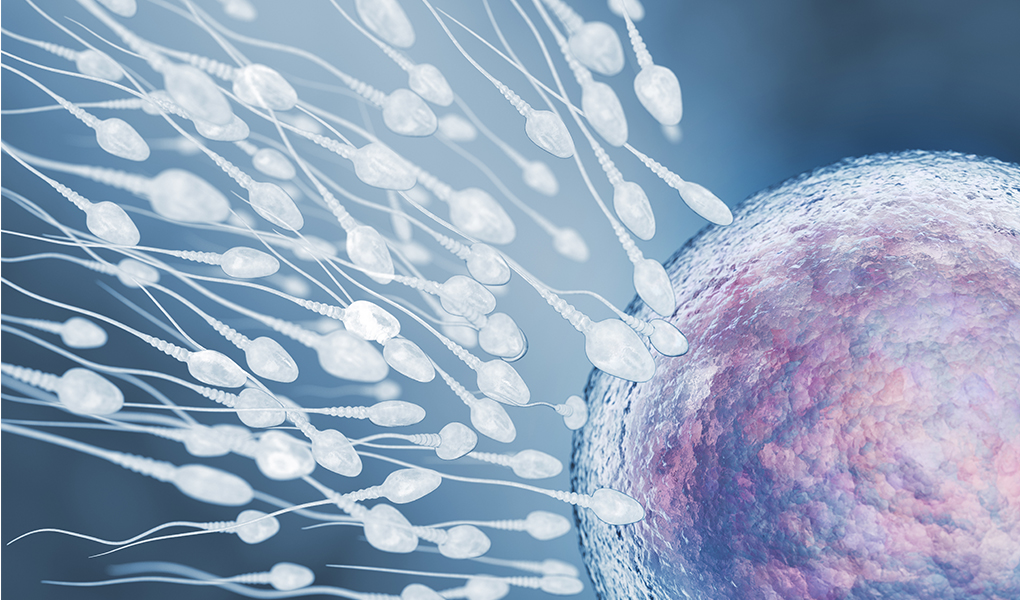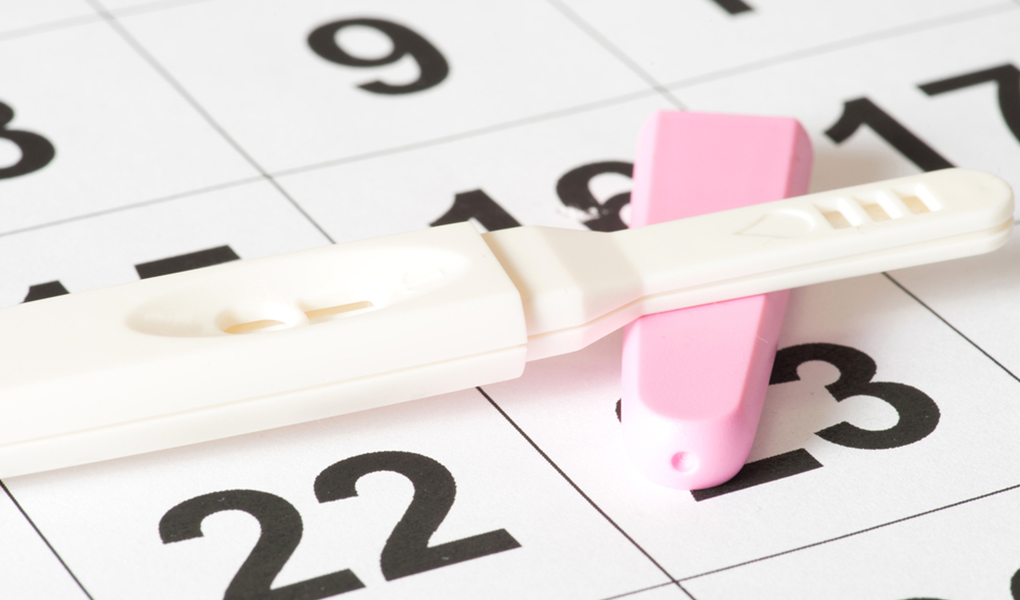After having unprotected and regular sex with your partner for 1 year, if you have not conceived it is advised to consult to a specialist to check your reproductive system. For women reproductivity is related with age. If you cannot conceive naturally after the age of 35 you should seek medical attention within 6 months and if you are aged over 40 you should attend to medical examination within 3 months. Following the examination if the couple needs to have medical treatment to conceive. Couple should apply to an assisted reproductive specialist to get a treatment plan. In the core, IVF treatment consists of 5 steps, these are ovulation induction, egg collection, sperm collection, fertilization and the final step is embryo transfer.
For the infertility treatment first, we mature the woman eggs (ovulation) and then those eggs must be collected. Sperm cells are taken from the father-to-be in a natural way mostly, in the embryology laboratory and those two cells are put together to form embryo this procedure is called fertilization. Healthiest of all the embryos formed chosen for the transfer procedure and pregnancy can occur. Following those steps, couple who could not conceive naturally can have pregnancy and following a healthy pregnancy period. You can find the answer for all your questions regarding infertility.
What is Fertilization?
For pregnancy to occur naturally, as well as the reproductive systems of women and men the brain and hormonal system should be working orderly, must be healthy. The hypothalamus in the woman’s brain for pregnancy stimulates the pituitary gland, which is a type of endocrine gland in the brain. The pituitary gland secretes LH and FSH hormones upon stimulation. Hormones reaching the ovaries through the circulatory system cause some of the eggs in the ovarian reserve to mature. The maturing eggs crack the follicles they are in. The best and healthiest egg is thrown into the fallopian tubes located between the ovaries and the uterus. The egg, which proceeds from the fallopian tubes to the uterus, lasts only 24 hours. However, sperm, which is the male reproductive cell, can remain alive in the female body for about 4 to 5 days. If the egg in the fallopian tubes meets the sperm cell within the first 24 hours, fertilization takes place. The fertilized egg advances to the uterus and clings to it.
However, fertilization may not occur naturally due to many different problems. While some of these conditions can be treated, some may continue to prevent the occurrence of pregnancy even if they are treated. In such cases, couples can have a baby with the help of fertility method. In the IVF method, fertilization is done in a laboratory environment. Fertilization, which is defined as fertilization in the language of medicine, can be done by two different methods, IVF and ICSI. Which of these methods is preferred depends mainly on the amount and motility of sperm cells. In other words, fertilization is provided by IVF (In Vitro Fertilization) method if there are criteria in sperm cells, and by ICSI (Intracytoplasmic Sperm Injection) method if there are not. It is determined under the microscope whether fertilization has taken place after fertilization in the embryology laboratory. Once fertilization is achieved, the time for embryo transfer is determined and the embryo is left in the mother’s womb and pregnancy begins. “What is Fertilization?”, Which is often asked by those who are considering getting pregnant with the IVF method. The question can be answered in this way.
Steps of Fertilization
For the female egg to be fertilized in the embryology laboratory, the maturation process of the eggs defined as ovulation induction must be completed first. On the 3rd day of menstruation, medication is started to ripen the eggs. Many eggs that mature within about 2 weeks are cracked with the help of a cracking needle to remove them from their follicles. Approximately 36 hours after the crackling needle is made, egg collection process defined as OPU is started. After this process, which takes about 5 to 20 minutes, the collected eggs are placed in the culture medium available in the laboratory. While collecting eggs from women, men should also give sperm via masturbation. However, if sperm cell that cannot fertilize the egg cannot be obtained in this way, sperm can be obtained with the biopsy method defined as TESE. Sperm cells are separated from the semen by a special washing process applied in a laboratory environment. Then, fertilization, that is, fertilization phase is started.
The fertilization phase is done by two different methods. What is decisive at this point is the quality of the sperm cell. If there is no problem in fertilization capacity, fertilization is done by IVF method. In this method, eggs collected from women and sperm cells taken from men are brought together in a culture medium. In this method, where natural selection is possible, some of the eggs are fertilized. Eggs are kept in the culture medium for fertilization control after the fertilization process is completed. However, there is a possibility of fertilization of more than one sperm in a single egg, known as polyspermia, when fertilization is low when using a small number of sperm. Embryos formed in the presence of polyspermia cannot be used for transfer. Therefore, selection of laboratory is very important in IVF method.
Another fertilization method is ICSI or microinjection, commonly known as. In this method, an egg is held with a holding straw and a sperm cell is injected into the egg with a microinjection pipette. After the ICSI method, which is a very sensitive microsurgical procedure, the eggs where the injection is made are left in the fresh culture liquid and kept until fertilization control is made. Fertilization is checked after waiting for 10 to 18 hours after completion of IVF or ICSI treatment. During this control performed under the microscope, zygote formation is sought. A 2-core (2 pronucleus or 2 PN) egg indicates healthy fertilization. The presence of pitted (0 PN) or unhealthy (1 PN or 3 PN) eggs indicates that fertilization did not occur in a healthy way. The 2-core healthy zygote continues to multiply by dividing, resulting in an embryo.
Embryo transfer is made on the 2nd to 6th day after egg collection. This procedure, which does not require anesthesia, is performed through a catheter delivered from the vagina to the endometrium. Embryo implantation, or in other words, attachment of the embryo to the uterine wall occurs within 6 to 10 days. Thus, the pregnancy process begins. What are the fertilization stages or fertilization stages? The question can be answered in this way. A value question that couples who are planning to have a baby with the IVF method is curious about is “Where Does Fertilization Take Place?” It shaped.
Where Does Fertilization Occur?
Fertilization takes place in the fallopian tubes during naturally occurring pregnancies. The fallopian tubes, where the egg is thrown after cracking, is the channel-like structure between the ovaries and the uterus. The egg stays alive for up to 24 hours after being thrown into the fallopian tubes. In other words, the egg dies before it reaches the uterus yet. Male reproductive cell sperm can survive in the female body for about 4 to 5 days. The sperm cell, which comes out of the cervix, the uterus, and then to the fallopian tubes, performs fertilization if the egg is located at this point. If there is no egg, it can wait for the egg to arrive for 4-5 days. In both IVF or ICSI methods used in the IVF method, fertilization is performed in a laboratory environment. In IVF method, fertilization occurs by combining egg and sperm in the culture medium in the embryology laboratory. In the ICSI method, sperm is left inside the egg by microinjection method.
If you are planning to have a child and if you require medical attention, you can contact us at 444 39 49 for any questions you have. We wish you healthy days.





Be the first to comment